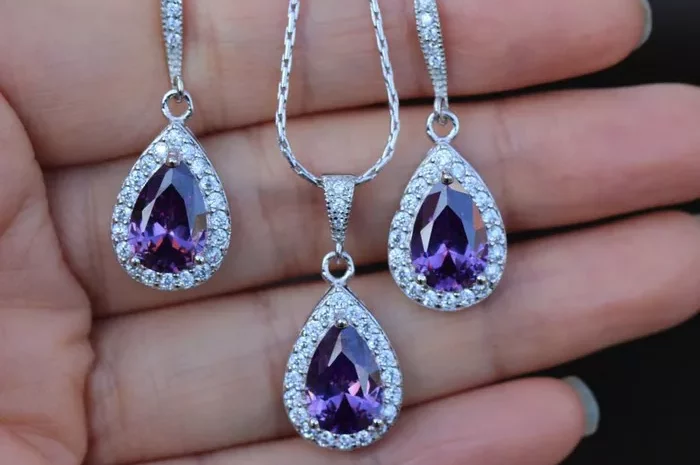Gemstones have long captivated human imagination with their stunning beauty and inherent geological history. Among the myriad of gemstones that adorn jewelry and collector’s displays, pink amethyst stands out as a captivating and unique variety. While the traditional purple amethyst has been celebrated for its rich violet hues, the emergence of pink amethyst has intrigued gem enthusiasts and geologists alike. In this article, we delve into the fascinating process of how pink amethyst is formed, shedding light on the geological forces and conditions that give rise to this exquisite gem.
Origin of Amethyst
Amethyst, a purple quartz gemstone, has been valued for centuries. It forms in a variety of geological settings, with notable sources including Brazil, Uruguay, Zambia, and Madagascar. Ancient Greeks believed amethyst could prevent intoxication, and its name derives from “amethystos,” meaning “not drunk.” Historically, amethyst was considered a precious gemstone, often used in royal jewelry and religious artifacts. Today, it’s widely used in jewelry due to its captivating color and spiritual associations. Amethyst’s diverse origins contribute to its availability, making it one of the most popular and cherished gemstones throughout history.
What is Pink Amethyst?
“Pink Amethyst” is a relatively new and somewhat controversial term used to describe a specific variety of quartz with pink to light purple hues. Unlike traditional purple amethyst, pink amethyst features delicate pastel colors ranging from pale pink to soft lavender. However, within the gemological community, there is debate about whether this material should be labeled as “amethyst” since the color range is different from the traditional purple variety. Pink amethyst is primarily found in certain regions of Argentina. Its alluring shades and unique appearance have gained popularity in jewelry design, despite the ongoing discussions about its classification.
See Also: The Origins of Amethyst’s Royal Purple Hue: A Quick Guide
The formation process of pink amethyst
Pink amethyst’s formation process is attributed to the interaction of geological conditions, minerals, and trace elements. It’s primarily found in the prolific amethyst-producing regions of Argentina, specifically in areas like the Rio Grande do Sul state.
The formation of pink amethyst involves several key factors:
1. Mineral Composition:
The coloration is likely due to the presence of trace elements like manganese and iron, which can create shades of pink and light purple.
2. Temperature and Pressure:
During the cooling and crystallization process, variations in temperature and pressure can lead to the development of unique color zones within the quartz crystals.
3. Hydrothermal Processes:
Fluid-rich solutions containing mineral components seep through fractures in the earth’s crust, depositing minerals and trace elements as they interact with existing quartz crystals.
4. Secondary Mineralization:
The introduction of other minerals, such as iron or manganese-bearing minerals, can tint the quartz crystals in shades of pink and purple during secondary mineralization events.
It’s important to note that while the term “pink amethyst” has gained popularity in the market, it’s not universally accepted in the gemological community. Some experts consider it more accurate to refer to these specimens as pink quartz due to the distinct color difference from traditional amethyst. Regardless of nomenclature, the unique formation process contributes to the attractive appearance of these gemstones.
Mining Pink Amethyst
Pink amethyst is mined primarily in the state of Rio Grande do Sul, Brazil. Miners extract this unique variety of quartz from underground deposits and open-pit mines. The mining process involves removing overlying materials to access the gem-bearing zones. Miners use tools like drills, explosives, and heavy machinery to extract the quartz crystals. Once obtained, the rough pink amethyst crystals are carefully sorted, cleaned, and prepared for cutting and polishing. Due to the delicate nature of the color, preserving the gem’s pastel hues during the extraction and cutting processes is essential to ensure the desired visual appeal of pink amethyst jewelry.
The Rarity of Pink Amethyst
Pink amethyst is a gem of exceptional rarity. Its delicate shades of pink and light purple distinguish it from traditional amethyst. Found primarily in certain regions of Argentina, notably Rio Grande do Sul, its limited occurrence contributes to its scarcity. The gem’s unique coloration is attributed to trace elements and geological conditions. Pink amethyst’s rarity has garnered significant attention in the market, making it highly sought after by collectors and jewelry enthusiasts. Its captivating beauty, combined with its infrequent occurrence, adds to its allure, cementing its status as a precious and distinctive gemstone.
Pink Amethyst As a Symbol
Pink amethyst symbolizes tranquility, emotional balance, and love. Its soft, soothing hues reflect a sense of calmness and inner peace. The delicate pink tones evoke feelings of compassion and self-love, encouraging emotional healing and harmony. Pink amethyst’s rarity and unique coloration also symbolize the uniqueness and value of individuality. As a gemstone associated with the heart chakra, it promotes open-heartedness and a connection to love in all its forms. Wearing or using pink amethyst in spiritual practices can serve as a reminder to embrace love, kindness, and emotional well-being, fostering a deeper understanding of oneself and others.
Conclusion: A Geological Masterpiece
Pink amethyst stands as a testament to the intricate and awe-inspiring processes that shape our planet’s geological landscape. From the depths of the Earth’s crust to the hands of skilled artisans, the journey of pink amethyst is one of geological complexity and human ingenuity. Its creation involves a delicate dance of temperature, pressure, mineral interactions, and time—a dance that results in a gemstone of unparalleled beauty.
In conclusion, the formation of pink amethyst is a mesmerizing story of geological forces, mineral interactions, and delicate conditions. Its journey from the depths of the Earth to the jewelry showcases is a testament to the intricate processes that govern the creation of gemstones. Whether cherished for its aesthetic charm or its symbolic significance, pink amethyst remains an enchanting reminder of Earth’s geological wonders.


